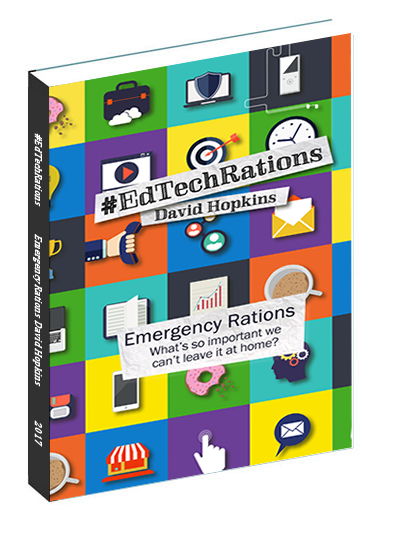CMALT
CMALT is the shortened, catchier way of talking about the Certified Member of the Association for Learning Technology qualification. CMALT is a peer-reviewed
“professional accreditation scheme developed by ALT to enable people whose work involves learning technology to have their experience and capabilities certified by peers, and demonstrate that they are taking a committed and serious approach to their professional development.”
By reviewing and reflecting on our own individual experiences in our work, the submitted CMALT portfolio reflects how we view our work through evidence-based reflection on five core themes:
- Contextual statement – while not assessed it is key to setting the scene for your portfolio, your work, your attitude and your approach to the work and role.
- Core 1 / Operational issues – “Candidates should demonstrate both their understanding and use of learning technology. “Use” might include the use of technology to enhance learning and teaching, the development, adoption or deployment of technology to support teaching, training or learning.”
- Core 2 / Teaching, learning and/or assessment – “Candidates should demonstrate their understanding of and engagement with teaching, learning and assessment processes. ‘Engagement’ may include using understanding to inform the development, adaptation or application of technology.”
- Core 3 / Wider context – “Candidates should demonstrate their awareness of and engagement with wider issues that inform their practice”
- Core 4 / Communications – “Candidates should demonstrate their knowledge and skills in communication through working with others.”
- Specialist option – “As well as the core areas, candidates are required to demonstrate evidence of independent practice in one or more specialist options. This reflects the fact that, although there are common areas of work for learning technologists, practice is extremely diverse and everyone specialises in something different”
- Future plans – this section is also not assessed but you will need this when it comes to the three-year review. So it’s best to spend some time and effort really thinking about what you’ll put here as it’ll make the review process easier.
Throughout the whole portfolio, whether you use a Word document, WordPress or Google site, or another online software tool you like, you should be sure of linking appropriate evidence to your description of the work or project and that you provide adequate reflection on each aspect. I have seen many examples of portfolios, both from the list of shared portfolios and as an assessor, and would encourage you to add project where you’ve worked as part of a group, but be sure to highlight your own involvement and reflections .. it is, after all, your portfolio!
Find out more on #CMALT and what it can mean to you (@A_L_T) Click To TweetIf you are already in the process of working on your CMALT portfolio, please drop me a line, perhaps we can help each out. If you have already completed it, and want to share your work then please do so here too.
Links
- My CMALT Portfolio!
- Association for Learning Technology
- Certified Membership of the Association for Learning Technology
Posts/pages
These posts are important to me, they form part of my journey to, firstly, understanding and undertaking CMALT and, secondly, furthering myself and my CMALT journey once I gained the qualification:
- Career path – keeping it fresh and interesting, and always reviewing what I do and why.
- Leaders and leadership – moving from Learning Technologist to leadership, managerial role(s).
- Another three years: what’s next? – Gaining my first CMALT renewal (every three years) was important. Here’s why.
- Chatting about CMALT – I was invited to present about CMALT at the 2016 ALTC conference. This is my reflection on that session and the conversations it sparked!
- Showcasing different approaches to building a CMALT portfolio – Not all portfolios are created equally. They all are, however, equally important and valid. Different approaches and different technologies we use are what makes our role ‘ours’!
- I’ve been certified! – November, 2013: notification of my certification has been received and I am sooo happy! This post is full of advice on what to do, when to do it, and why you should think about CMALT. Oh, and a CMALT badge too!
- Update: my CMALT portfolio – October 2011: progress on my CMALT portfolio. Something for everyone here. Hint: don’t procrastinate, get on with it already!!




















Best of luck with the CMALT. You are not alone! I too am preparing for the qualification probably slower than you.
I am not sure if we got the chance to meet at the eAssessment conference yesterday but I’m glad to have found your blog.
Best
Mourad
Hi Mourad. If we did not get the chance to meet then I am sorry, I hoped to meet as many as I could but with over 300 delegates that was always going to be difficult. I think I had about an hour at around 3PM when I was so tired I wasn’t sure what I was doing so hope we didn’t talk then as I was a little vacant!
All the best with CMALT, David.
probably in the next e-Assessment conference…http://bit.ly/obLRN1
probably in the next e-Assessment conference…http://bit.ly/obLRN1
probably in the next e-Assessment conference…http://bit.ly/obLRN1
I have just started my portfolio, gathering everything together, was assured at #ALTC2011 that I would be able to put it together fairly easily and that it is not as complicated as it looks – yeah we’ll see! good luck
Hi Mel.
I think it’s as difficult as we want to make it, but that doesn’t mean it’s easy. For many of us we’ve not done any formal editing/reviewing of our work other than for internal appraisals, so to have someone else pass ‘judgement’ (I know, it’s not really that, but that’s how it can feel at times) is a daunting prospect.
All the best, join a few of us in our ‘review and kick each other’ panel here: http://www.dontwasteyourtime.co.uk/cmalt/my-cmalt-portfolio/
David.
So, Melanie … how are you getting on? Did you submit?